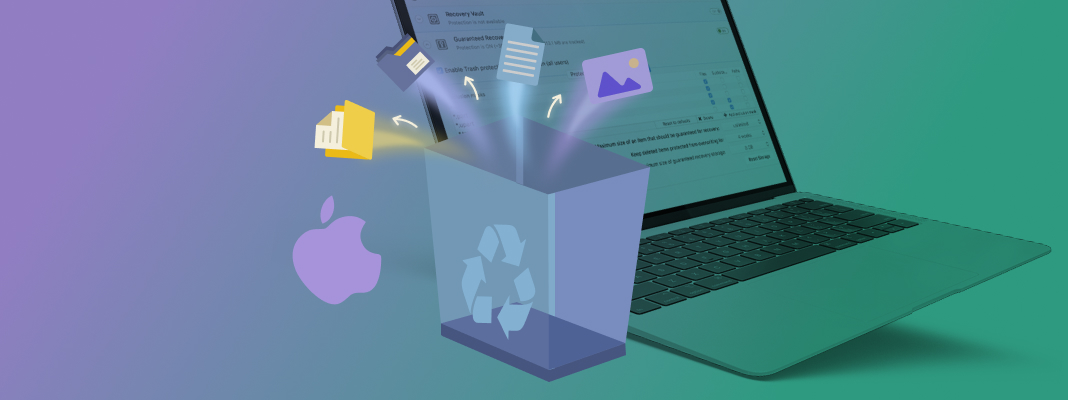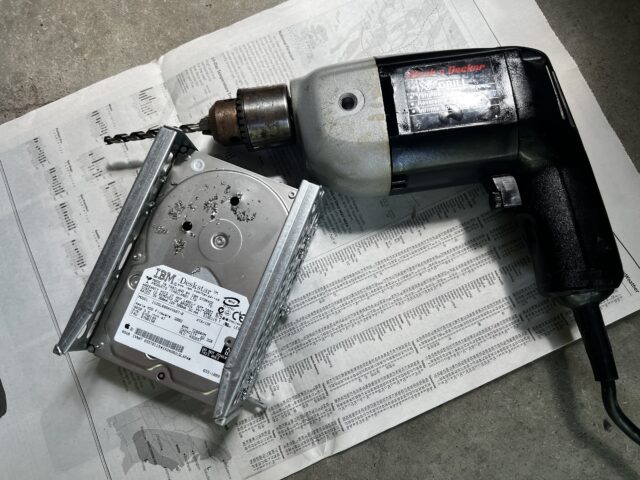You are using an out of date browser. It may not display this or other websites correctly.
You should upgrade or use an alternative browser.
You should upgrade or use an alternative browser.
What happened to "secure delete"?
- Thread starter Mikeo512
- Start date
- Joined
- Jan 23, 2009
- Messages
- 10,280
- Reaction score
- 2,226
- Points
- 113
- Location
- Born Scotland. Worked all over UK. Live in Wales
- Your Mac's Specs
- M2 Max Studio Extra, 32GB memory, 4TB, Sonoma 14.4.1 Apple 5K Retina Studio Monitor
Hi again.
You are correct. "Secure Delete" was removed or ineffective in Macs having a SSD and/or running an OS El Capitan or later according to this article:

 www.wellesley.edu
www.wellesley.edu
There are ways of "Permanently Deleting" Files & Folders. For example, read this Article:

 wethegeek.com
wethegeek.com
Your question has prompted some people to turn on File Vault (FV). I do not recommend this because there are too many complications and consequences; but some do use FV.
Ian
You are correct. "Secure Delete" was removed or ineffective in Macs having a SSD and/or running an OS El Capitan or later according to this article:

Secure Deletion
[/content/departments/lt/articles/computing/mac/securedelete-mac.xml]
There are ways of "Permanently Deleting" Files & Folders. For example, read this Article:

How To Permanently Delete Files Or Folders On Mac
Looking for a method to delete files and folder on your Mac? If you are running an older version then using a third-party app will be a clever idea.
Your question has prompted some people to turn on File Vault (FV). I do not recommend this because there are too many complications and consequences; but some do use FV.
Ian
Thanks for the reply and the information.
But what can you do ... if anything ... about files that have been deleted by having been dragged to trash over the months/years? Are all these up for grabs somewhere on the HD? Or do they perhaps "drop off the end" after a while? How easy is it to find them? I mean, it might happen that someone accidentally deletes a file and empties the trash. Can such a deleted file be retrieved by the average user?
M
But what can you do ... if anything ... about files that have been deleted by having been dragged to trash over the months/years? Are all these up for grabs somewhere on the HD? Or do they perhaps "drop off the end" after a while? How easy is it to find them? I mean, it might happen that someone accidentally deletes a file and empties the trash. Can such a deleted file be retrieved by the average user?
M
- Joined
- Jan 23, 2009
- Messages
- 10,280
- Reaction score
- 2,226
- Points
- 113
- Location
- Born Scotland. Worked all over UK. Live in Wales
- Your Mac's Specs
- M2 Max Studio Extra, 32GB memory, 4TB, Sonoma 14.4.1 Apple 5K Retina Studio Monitor
the average user?
No; not really. There are expensive and legitamate laboratories that claim to recover deleted material.
And there are apps for the Mac - eg Disk Drill - there are others - that offer "recovery" at a price, but without any definite guarantee. Out of interest, you might want to read this:
Disk Drill - Best Free Mac Data Recovery Software in 2024!
Disk Drill: The best data recovery software for Mac OS X. Recover deleted or lost data from any storage device, iOS and Android. Free scanning.
And to give you a broader view of "others":

10 Best Data Recovery Software for Mac (Pros, Cons, Pricing)
Mac users can choose from many different Mac data recovery tools. We’ve created a list of the top 10 data recovery software for Mac in 2024 to help you recover your lost files as quickly and painlessly as possible.
 www.macgasm.net
www.macgasm.net
But in real everyday terms, your deleted data is safe from all but the "experts".
You may be interested to know that quite a few of our members do a "Clean Install" of every new Operating System (OS). This means wiping the Drive, installing the new OS and manually copying all their files back to the Drive. This not only removes all the "scruff' that may have accumulated, but clears out the deleted data, if any remaining.
So there you have it. A very brief summary of the situation. My advice - stop worrying
Ian
- Joined
- Oct 16, 2010
- Messages
- 17,536
- Reaction score
- 1,574
- Points
- 113
- Location
- Brentwood Bay, BC, Canada
- Your Mac's Specs
- 2011 27" iMac, 1TB(partitioned) SSD, 20GB, OS X 10.11.6 El Capitan
OK and VMT, Ian, for your comprehensive reply ... I'll certainly check out the links that you supplied.
M
Why bother...??? And in a real life situation, who could you actually think of that would really want or even bother to go through your Mac hunting for some possible file even if they were given full access... I would say it ain't going to ever happen... Can you think of any possible reason why they would even want to???
And then how are they even going to get access to your computer????
I would agree with Ian and stop worrying and spend your time on something constructive... Charging windmills is so passé and out of style these days and a waste of time!!!
- Patrick
=======
- Joined
- Feb 1, 2011
- Messages
- 4,428
- Reaction score
- 2,143
- Points
- 113
- Location
- Sacramento, California
I remember some years ago, you had the option to "delete securely".
By serendipity, TidBits came out with a very comprehensive article on this topic just today!
How to Securely Erase a Mac’s SSD or Hard Drive

How to Securely Erase a Mac’s SSD or Hard Drive - TidBITS
If you need to get rid of a Mac or external drive, how do you ensure that no one can access the data on it? Adam Engst runs through the various methods you can employ, one or more of which should address your situation.
- Joined
- Jan 1, 2009
- Messages
- 15,505
- Reaction score
- 3,866
- Points
- 113
- Location
- Winchester, VA
- Your Mac's Specs
- MBP 16" 2023 (M3 Pro), iPhone 15 Pro, plus ATVs, AWatch, MacMinis (multiple)
If your Mac has the T2 chip or you have a Apple Silicon (M1/M2) system, the internal drive is encrypted by default, which can eliminate the need for secure erasure.

 eclecticlight.co
eclecticlight.co
This inherent encryption is NOT FileVault, but built into the security of the T2/Mx systems. And on those systems, turning on FileVault does not do the encryption, as it used to, but just adds another password layer to the unlocking of that encryption.
From the linked article:

Explainer: FileVault
On T2 and M1 Macs, FileVault provides robust protection of the Data volume on internal storage without any performance penalty.
 eclecticlight.co
eclecticlight.co
This inherent encryption is NOT FileVault, but built into the security of the T2/Mx systems. And on those systems, turning on FileVault does not do the encryption, as it used to, but just adds another password layer to the unlocking of that encryption.
From the linked article:
Securely erasing an encrypted volume, also performed when ‘erasing all content and settings’, results in the secure enclave deleting its VEK and the xART key, which renders the residual volume data inaccessible even to the secure enclave itself. This ensures that there is no need to delete or overwrite any residual data from an encrypted volume: once the volume’s encryption key has been deleted, its previous contents are immediately unrecoverable.
- Joined
- Oct 16, 2010
- Messages
- 17,536
- Reaction score
- 1,574
- Points
- 113
- Location
- Brentwood Bay, BC, Canada
- Your Mac's Specs
- 2011 27" iMac, 1TB(partitioned) SSD, 20GB, OS X 10.11.6 El Capitan
If your Mac has the T2 chip or you have a Apple Silicon (M1/M2) system, the internal drive is encrypted by default, which can eliminate the need for secure erasure.
I doubt that I will ever own such a machine, but thanks for the info and I did not know that.
I guess I never even bothered to check either, but there again, why would I???
But certainly good information for those who have such machines.
- Patrick
=======




